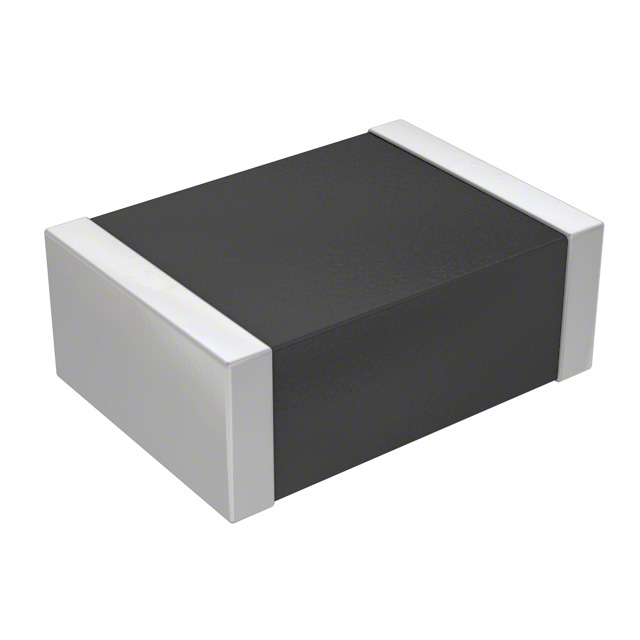Xem thông số kỹ thuật để biết chi tiết sản phẩm.

B72580V0250K062 - Product Overview
Introduction
The B72580V0250K062 is a component belonging to the category of varistors, which are electronic devices used to protect circuits from excessive voltage. This entry will provide an overview of the basic information, specifications, detailed pin configuration, functional features, advantages and disadvantages, working principles, application field plans, and alternative models of the B72580V0250K062.
Basic Information Overview
- Category: Varistors
- Use: Protection against excessive voltage in electronic circuits
- Characteristics: High energy absorption capacity, fast response time, compact size
- Package: Not specified
- Essence: Voltage protection
- Packaging/Quantity: Not specified
Specifications
- Model: B72580V0250K062
- Voltage Rating: 25V
- Maximum Allowable Voltage: 31V
- Peak Current (8/20µs): 600A
- Energy (10/1000µs): 2.5J
- Operating Temperature Range: -40°C to +85°C
- Lead Material: Tin-plated copper
Detailed Pin Configuration
The B72580V0250K062 typically consists of two leads for connection within a circuit. The specific pin configuration may vary based on the package type.
Functional Features
- Voltage Clamping: Provides protection by clamping excessive voltage levels to a safe threshold.
- Fast Response Time: Reacts quickly to voltage surges, minimizing the risk of damage to connected components.
- High Energy Absorption: Capable of dissipating significant amounts of energy during transient events.
Advantages and Disadvantages
Advantages
- Effective protection against voltage spikes
- Fast response time
- Compact size
Disadvantages
- Limited maximum voltage rating
- Specific packaging details not provided
Working Principles
The B72580V0250K062 operates based on the principle of varistor action, where its resistance decreases as the applied voltage increases. This allows it to divert excess current away from sensitive components, safeguarding the circuit from damage.
Detailed Application Field Plans
The B72580V0250K062 finds applications in various electronic systems requiring protection against voltage transients, including: - Power supplies - Telecommunication equipment - Industrial control systems - Consumer electronics
Detailed and Complete Alternative Models
For users seeking alternatives to the B72580V0250K062, several varistor models with comparable specifications and performance characteristics are available from manufacturers such as Littelfuse, TDK, and Vishay. Some alternative models include: - Littelfuse V25S025P - TDK AVRH6S250T060 - Vishay S14K25G5
In conclusion, the B72580V0250K062 varistor offers effective voltage protection with its high energy absorption capacity and fast response time. While it has limitations in terms of maximum voltage rating and lacks specific packaging details, it serves as a reliable component in safeguarding electronic circuits from transient voltage events.
Word Count: 443
Liệt kê 10 câu hỏi và câu trả lời thường gặp liên quan đến ứng dụng B72580V0250K062 trong giải pháp kỹ thuật
What is the B72580V0250K062 component used for in technical solutions?
- The B72580V0250K062 is a varistor, commonly used for overvoltage protection in electronic circuits.
What are the key specifications of the B72580V0250K062?
- The B72580V0250K062 has a voltage rating of 25V and a maximum surge current of 250A.
How does the B72580V0250K062 provide overvoltage protection?
- When an overvoltage occurs, the varistor conducts current to divert excess energy away from sensitive components, protecting them from damage.
In what types of technical applications is the B72580V0250K062 commonly used?
- The B72580V0250K062 is often used in power supplies, industrial equipment, and consumer electronics to safeguard against voltage spikes.
What are the advantages of using the B72580V0250K062 in technical solutions?
- The varistor offers fast response times, high surge current capability, and reliability in protecting electronic devices from transient overvoltages.
Are there any limitations or considerations when using the B72580V0250K062?
- It's important to ensure that the varistor is properly rated for the application's voltage levels and to consider its degradation over time with repeated exposure to overvoltages.
Can the B72580V0250K062 be used in automotive applications?
- Yes, the B72580V0250K062 can be utilized in automotive systems to protect sensitive electronics from voltage transients.
What is the operating temperature range of the B72580V0250K062?
- The varistor typically operates within a temperature range of -40°C to +85°C, making it suitable for various environmental conditions.
Does the B72580V0250K062 require any additional circuitry for proper integration?
- In most cases, the varistor can be directly connected across the circuit being protected without the need for additional circuitry.
Where can I find detailed application notes and guidelines for implementing the B72580V0250K062 in technical solutions?
- Detailed application notes and guidelines can be found in the datasheet provided by the manufacturer or through their technical support resources.

